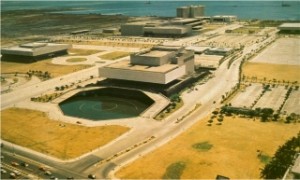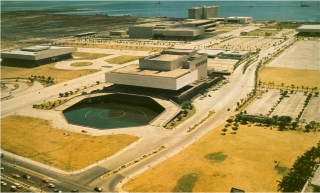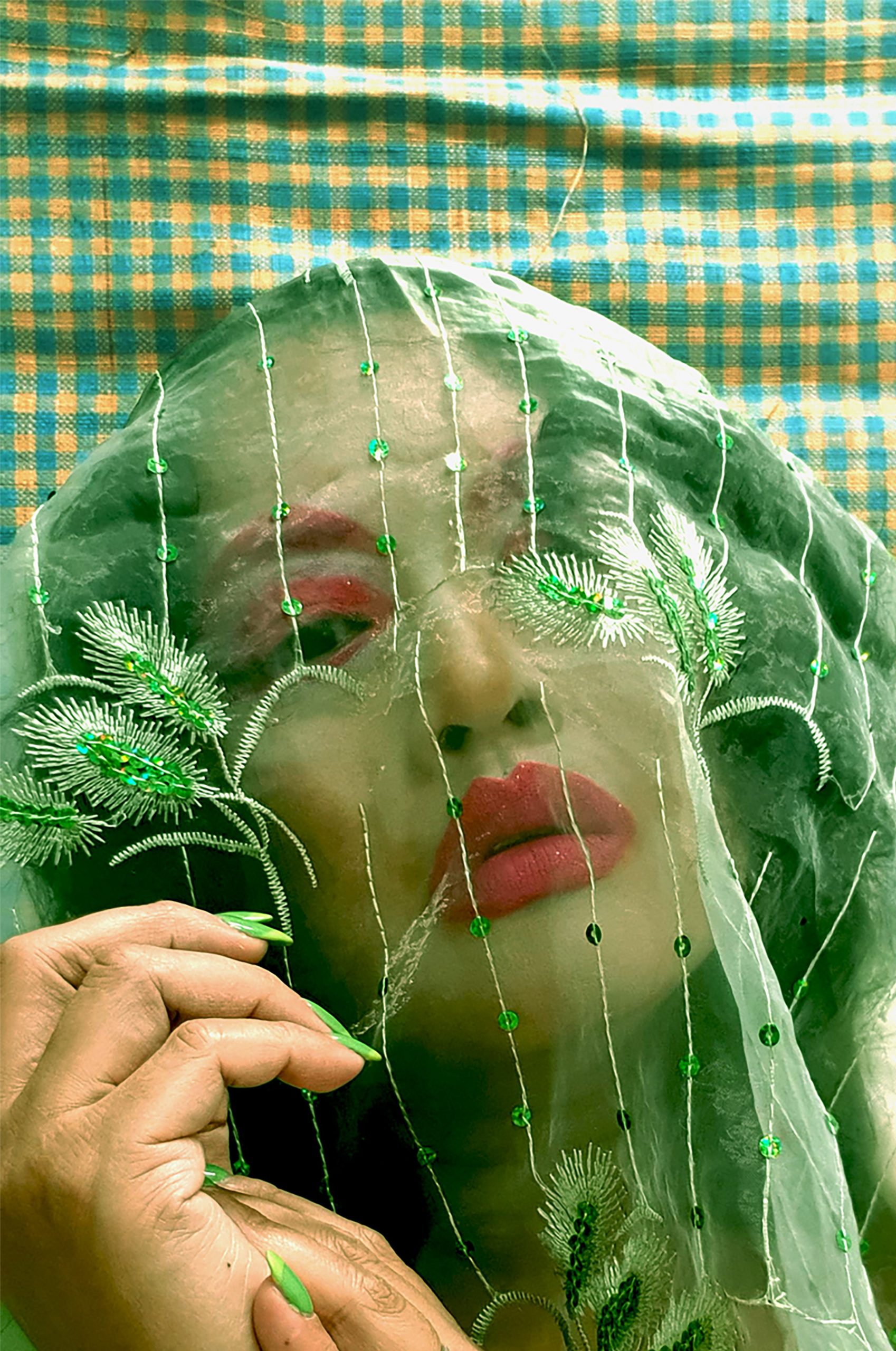
(First of a Series)
By Tom Macphail – Approaching and analyzing specifically “Filipino” art, the writer must be aware of the tendencies to frame Filipino artistic movements within the Southeast Asian context and the pressures that this places on the Filipino artist within this environment.
We might briefly consider large scale international contemporary art exhibitions in their representation of the Philippines over the past few years, to be represented here by the Asian Pacific Triennial (APT) and the Singapore Biennial.
The Asian Pacific Triennial (APT), held at Queensland’s Gallery of Modern Art (GOMA), has aimed “at a forward thinking approach to examining how contemporary artists address questions of geography, history and culture and the complexity of the region is considered each time.
Clearly the focus for the Triennial is towards celebrating and exploring the concepts of regionality, though the direction is decidedly pointed towards the ‘Pacific’ region rather than the south-east asian. Subsequently, South-east asian artists are presented alongside Australian or New Zealand artists.
The lone representative for the Philippines at the 7th Asian pacific Triennial was Manuel Ocampo, a painter that lives and works in Manila . Emerging in the 1990s, Ocampo fuses sacred baroque religious iconography with a secular political narrative. His background of comic book illustration further points to an adoption of American street culture, specifically the punk subculture. To simplify the complex to a singular sentence, the representation of Philippine arts is here dealing with a colonial past and future. Ocampo’s recent work has steeped towards a focus on art history and contemporary political satire .
At the previous Asia Pacific Triennial (2009), the Philippines were represented by Isabel and Alfredo Aquilizan, a husband and wife team exhibiting chiefly between Australian (Sydney and Melbourne) and the Philippines (Manila) whose work frequently addresses issues of migration in the Philippines. The Singapore Biennale is another exhibition that we might focus on.
Having run for just under 10 years, the program boasts that ‘90% of the artists represented hail from south-east asia’. The Exhibitions did indeed, representing a number of Filo artists including Nikki Luna whose work Tiempos Muertos – Dead Season focuses on the “Sugar City” of Bacolod, describing the negative effects of globalization and increasing industrialization for South-east Asia.
The collective of Philippines artists known as Siete Pesos created the work 2243: Moving Forward a mixed media work made from a refurbished motorella, banca with life jackets and video projection. The work drove through the streets, giving rides for just 7 pesos, aiming to be a catalyst for healing after the devastation of caused by Typhoon Sendong. So, Whilst the Typhoon was an experience of the Philipinnes, the Motorella is itself a shared icon of South-east-asia.
Further scholarship from Nora Taylor argues of South-East Asian art; “South East Asia, and by extension South East Asian Art, seems to be in a permanent state of self-reflexivity over issues of geography and culture. Taylor goes on to write that assumptions in art history, whilst not being entirely grounded in cultural difference, rely on it heavily to understand and analyze certain artists work.
The purpose of a paper dealing with contemporary art from the Philippines is in part to find the elements that distinguish it, domestically, regionally or internationally. We do however, face questions of national identity, colonial and neocolonial influence and historical precedent that make arguments troublingly broad .
Cherubim Quizon writes as well that “In the Philippine case, nation and community have been imagined and re-imagined and any which way, and expressed with particular violence under Ferdinand Marcos’ rule… The deep mistrust of grand political and cultural narratives, whether homegrown or coming from abroad, creates tensions with a much older and more longstanding yearning for an un-conflicted “Filipino identity. In the regionalized globalized art market a writer does face the quandary of cultural difference as a key methodology of analysis.
Without wishing to hide from this methodology, this essay will approach art in the Philippines by considering the unique cultural experience that martial law under the Ferdinand Macros regime presents and how artists have represented and responded to this history.
Ferdinand Marcos was elected president of the Philippines in 1965. The Philippines had been under Spanish colonial control between the 16th century to the late 19th century. From there the Philippines became an unincorporated territory of the United States and whilst commonwealth status was then granted by the American government in 1935, World War II had lead to invasion by the Japanese empire and the establishment of a puppet government, known at the second Philippine republic .
The government was formally dissolved on August 17th 1945, but the country would spend the next 20 years in relative political chaos with difficult occasional communist uprising straining rule of law for presidents prior to Marcos . With help once again found from the United States, the government defeated the Hukblalahap insurgency and by 1967 there were fewer than 170 communists guerrillas remaining[. Marcos’ presidency also coincided with a large Pacific Asian economic boom, described by William H. Overholt as “the broadest-based economic takeoff world history had yet seen, and with a similarly broad-based political consolidation” .
The Philippines itself, through a model of import substitution policies, thrived in this environment withs an average growth rate exceeding Southeast Asia, Taiwan and South Korea . The population of the Philippines was also growing incredibly rapidly; from 30 to 40 million between 1950 and 1965 .Marcos himself had claimed to have spent many years in the resistance against the Japanese, commanding a large guerrilla force. This was certainly a large part of his self-representation whilst on the campaign trail, though it is believed by many to have been a fallacy. Regardless of it’s reality, it was his public perception that matters.
He was further acknowledged as brilliant lawyer and the political leader of a generation. As such, Ferdinand Marcos was very much elected on the basis that he would ride the momentum of economic upturn and the possibility that he could return the Philippines to a place of pre-colonial national glory .
To conclude on this point Gerard Lico writes, “at the outset of Marcos’s governance, the promise of national rebirth and resurrection of old filipino traditions was his principal preoccupation” . Marcos nurtured a myth for which some historians had coined the term palingenesis or palingenetic, a form of utopianism which evoked the idea of rebirth or spiritual regeneration, stressing the imperative to reconnect with the past to promote a “rebirth” of the great Malayan nation as common destiny, the birthright of a people piloted by a great leader .
On September 21st, 1972, claiming that the move was his last defense against the rising disorder caused by increasingly violent student groups and insurgency despite monumental strides in agriculture, industry and education, Ferdinand Marcos’ introduced Martial Law. Marcos portrayed Vietnam-era student demonstration as evidence of a gigantic communist conspiracy . Ferdinand Marcos’ self-authored propaganda book, Notes on the New Society (1970) was written to pervasively persuade and propagate the necessity for this course of action.
The book dramatically narrates the events that justify the declaration. Significantly, he takes this further, propagating a sociopolitical criteria necessary in the foundation of a ‘New Society.
This was after all, an initial focus for his presidency conceptually linked to old Filipino traditions and cultural nostalgia. Yet, the sacrifices that the ‘New Society’ required and the rigorous process of social engineering and “cultural rejuvenation” that Notes on the New Society suggests, would mean something entirely new . History books that had dominated schools throughout the country until the 1960s spoke of the colonial experience as a civilizing one.
Marcos appears to have recognized that there was a lack of a ‘grand tradition’ preceding Spanish intervention that could not easily be accessed by the Philippines public. The place of the Philippines, particularly in terms of art and cultural discourse, in South-East Asia was becoming ambiguous. On one extreme it was viewed as an Asian country so Latinised by Spanish colonial rule that its art shares more with Central and South America than with its neighbours.
Luis Gomez article writing on the Philippine Exposition of 1887 in Madrid details the intervention of Spaniards in local arts productions and draw links with the arts being brought back from South America at the time.
On another hand, the Philippines was seen from withinthe upper and midde cases as an irretrievably Americanised country with a “damaged culture.”












Leave a Reply